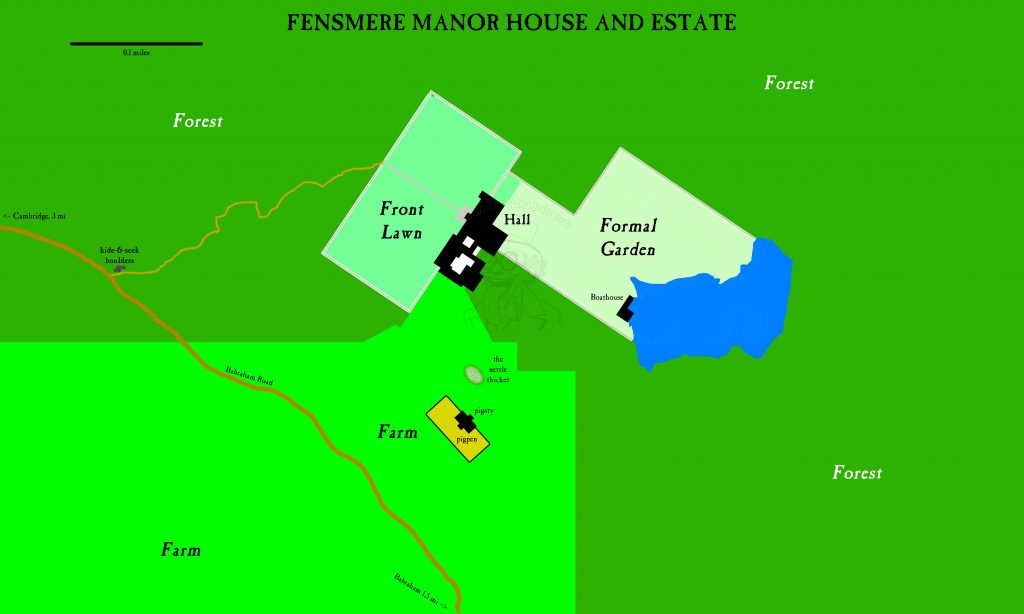
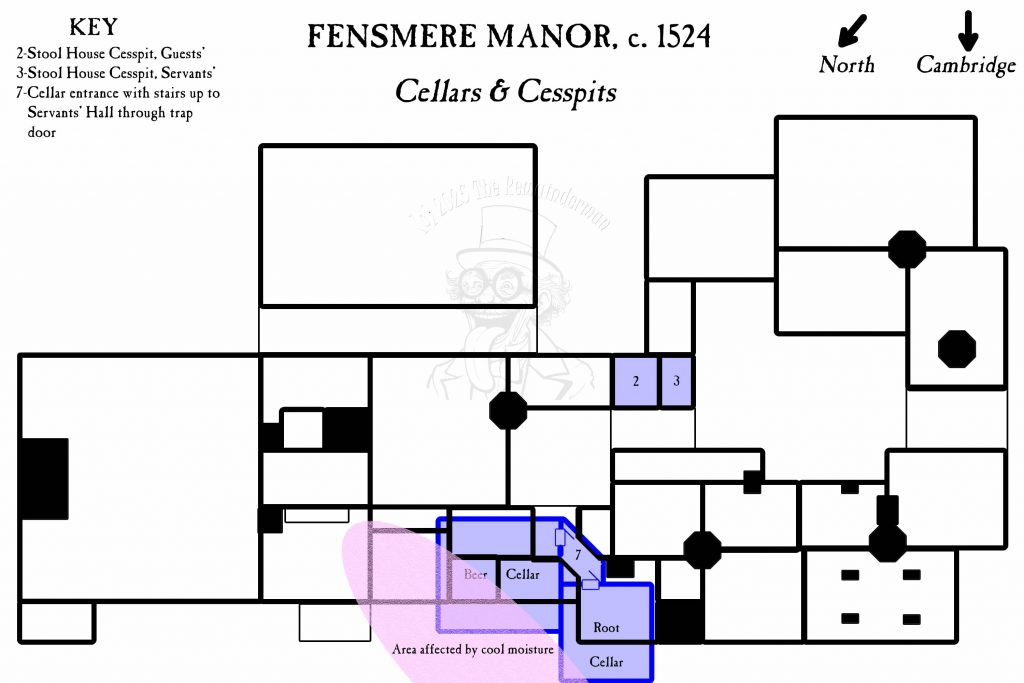
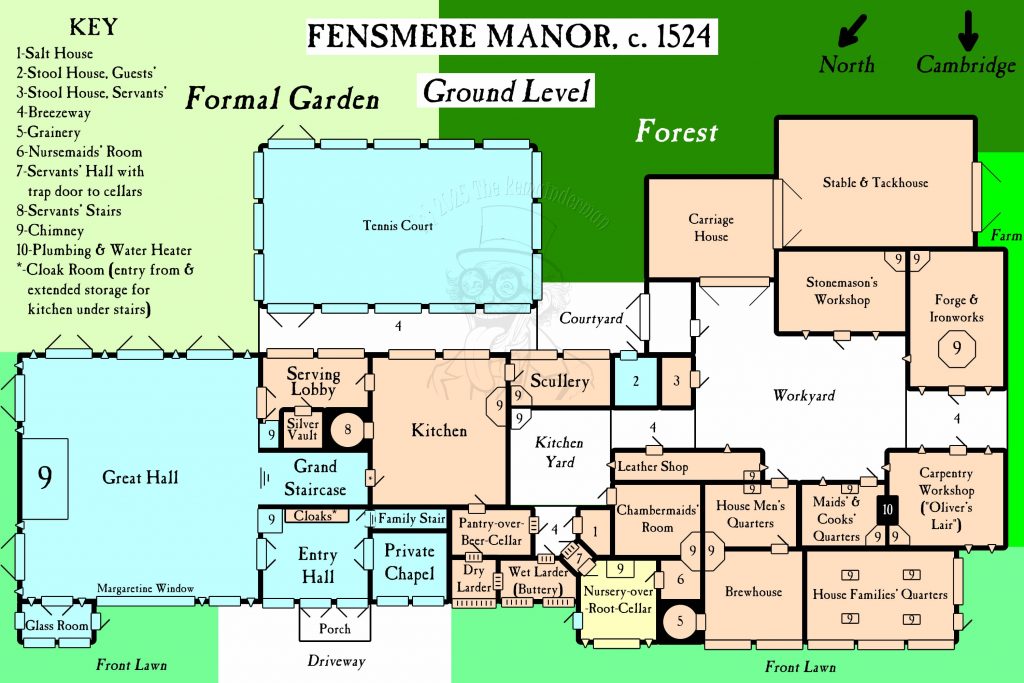
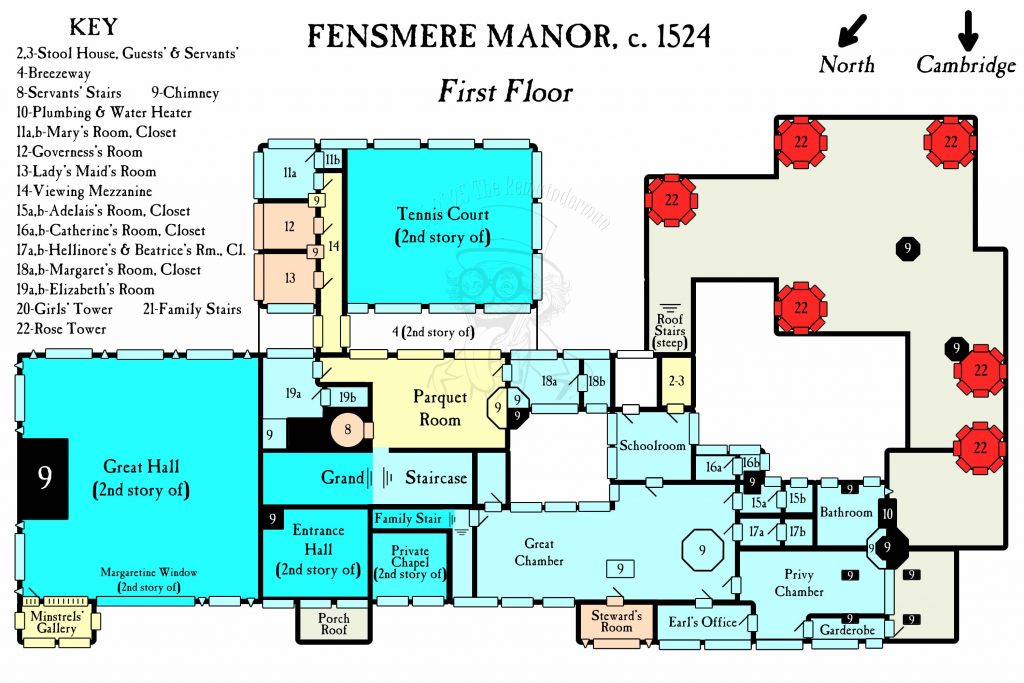
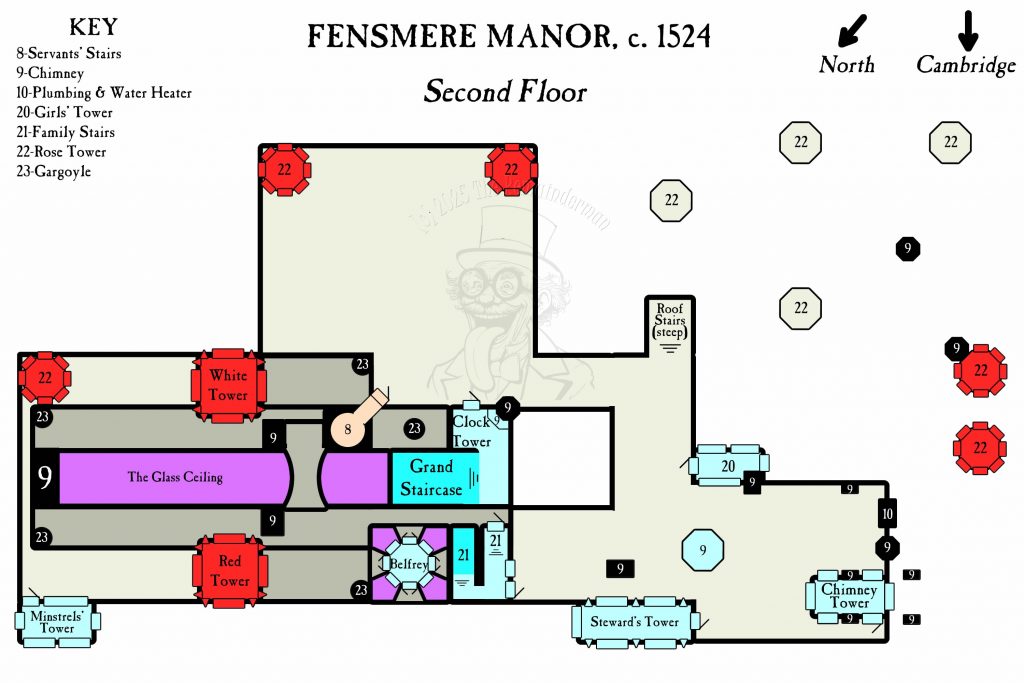
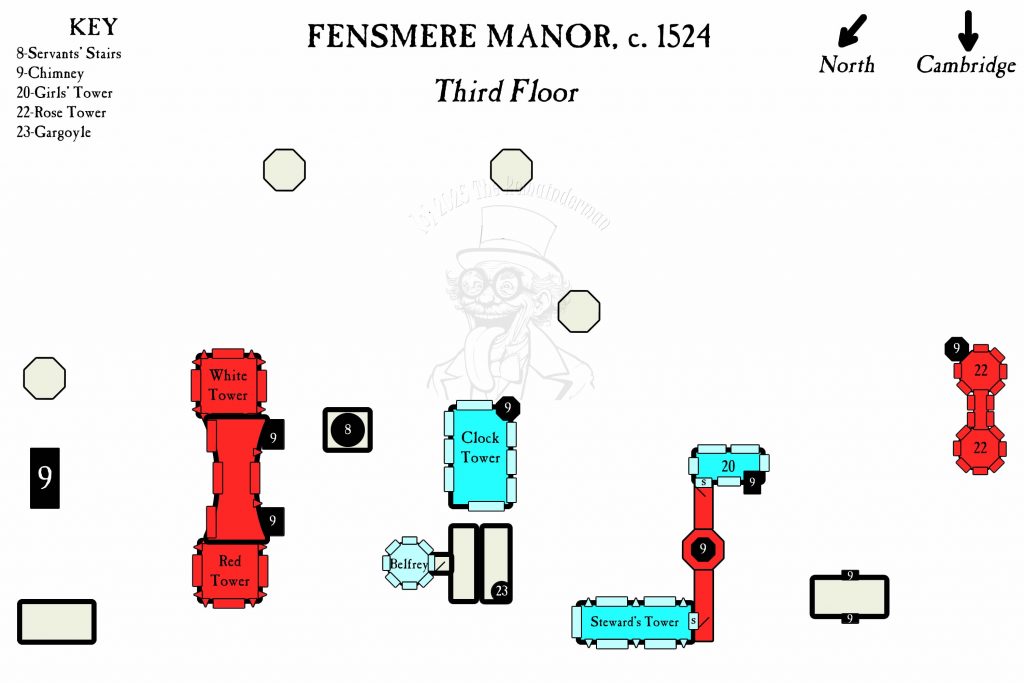
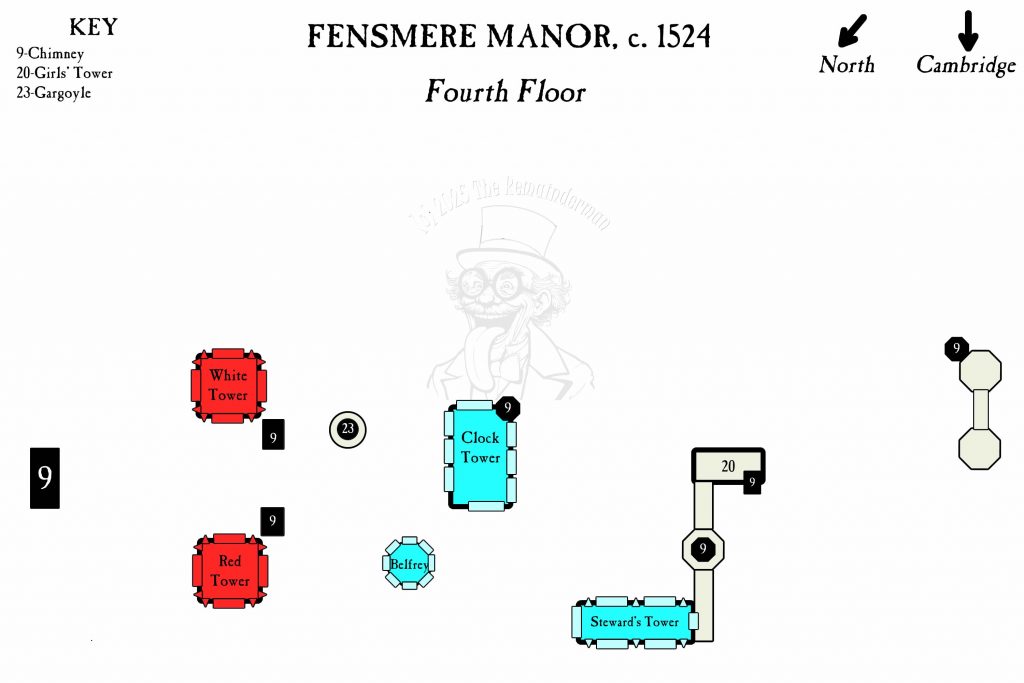
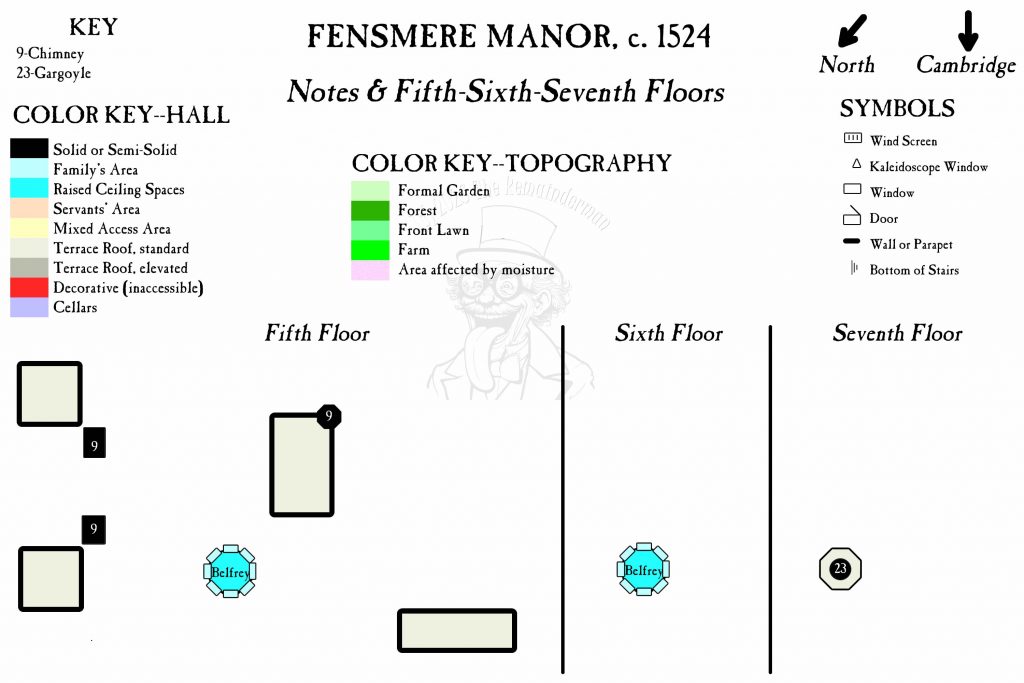
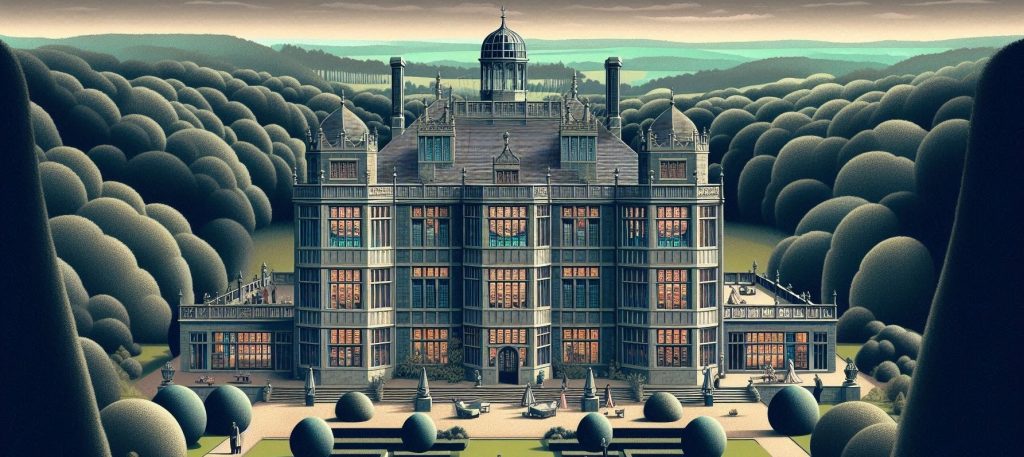
Fensmere Manor is the silent host and witness to most of the events in ARPc and some of those in ARPh. It was effectively the seat of the Earl and Countess of Warwick during that title’s creation for the Defalais family, which held the title between the creations for the Nevilles and the Dudleys. The second Earl, Robert Defalais, resided there partly out of deference for his first wife, Margaret; but probably more so, because by comparison, Warwick Castle was a joyless bunker that would require a fortune to upgrade.
Fensmere was located on the Gog Magog hills of Cambridgeshire, overlooking Cambridge, within a half-mile of the Babraham Road, around the area now occupied by Wandlebury Country Park. It was one of the earliest country houses in England, begun by Margaret’s father with money her maternal grandfather had acquired under circumstances that were not well-known, and consequently still remained a subject of gossip. While easily overshadowed by Cardinal Wolsey’s magnificent Hampton Court, construction at Fensmere Hall began about a decade earlier, in the final years of Henry VII’s reign or the earliest ones of Henry VIII. Fensmere Hall remained ahead of its time until the dissolution of the monasteries enriched the Tudor nobility and led to the building boom of the later Tudor and early Stuart periods. Although not fully one of the so-called “prodigy houses” of those later eras, like Hampton Court it was more than a precursor to them: a house designed to demonstrate the wealth and prestige of its builder, especially through the use of glass, extensive craftsmanship, and expansive amenities.
The new style of building was inspired by the Italian Renaissance, fueled by prosperity, and enabled by dramatic changes in Western Europe that allowed construction to focus on residential rather than defensive purposes for the first time since antiquity. While gunpowder and cannon were eroding the advantages of armor and residential fortresses, trade, commerce, and education were knitting together nations from isolated fiefdoms ruled by battling warlords. Where once the Royal Progress through the land had been as a heavily-armed military convoy traveling from loyal castle to loyal castle for protection, it was now beginning its evolution toward the Mardi Gras parade roving from one palace to the next, that it would become by Elizabeth I’s reign.
By the time of ARPc, Fensmere Hall was, for all intents and purposes, finished. Its design had changed over time, most notably after Margaret took over construction after her father’s death; but also incrementally as new construction materials and ideas filtered into England. As a result, it was a bit of a hodgepodge, but it contained most or all of the elements found in later prodigy houses. Margaret’s daughters loved the house and all it symbolized—partly because of their love for her and her untimely death; partly because the house was so advanced for its time; partly because it was ripped away from them prematurely and traumatically; but perhaps mainly because it had been such a labor of love for Margaret’s father that it became a matter of the family’s mythology and identity.
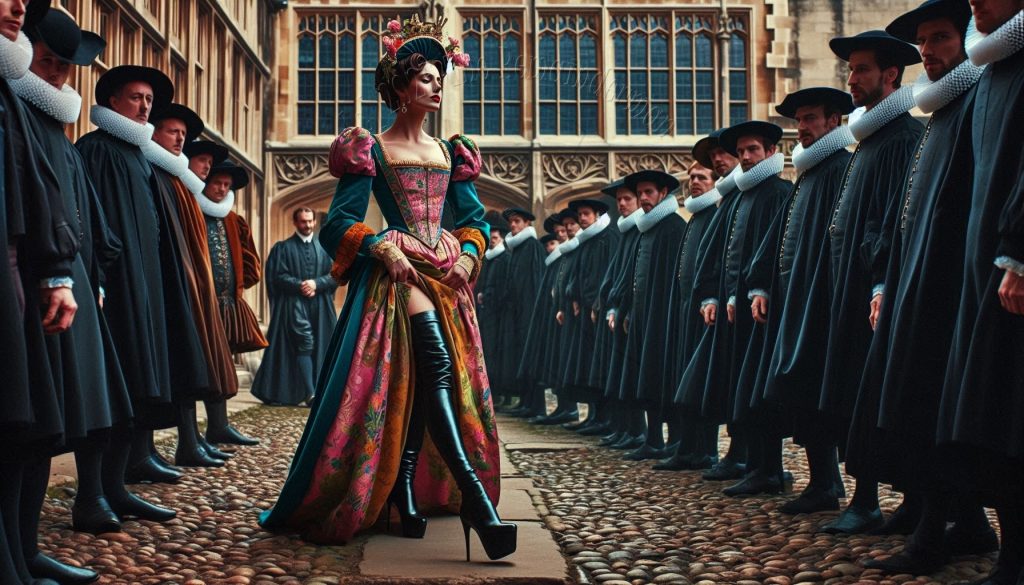
In 1496, the Bishop of Ely converted a derelict nunnery on the eastern edge of Cambridge, the 12th-century Benedictine nunnery of St. Mary and St. Radegund, into a community for graduate priests studying in the University of Cambridge, with a free grammar school for the choristers serving in the College’s Chapel and other locals. Its full name is “The College of the Blessed Virgin Mary, Saint John the Evangelist and the glorious Virgin Saint Radegund, near Cambridge.” The name “Jesus” was actually derived from its Chapel. In the 1520s it was still a new, struggling, and tiny school with only six or seven priests and very rarely, other students, who were unlikely to obtain degrees, since degrees were only required for clergymen, church lawyers, and schoolmasters.
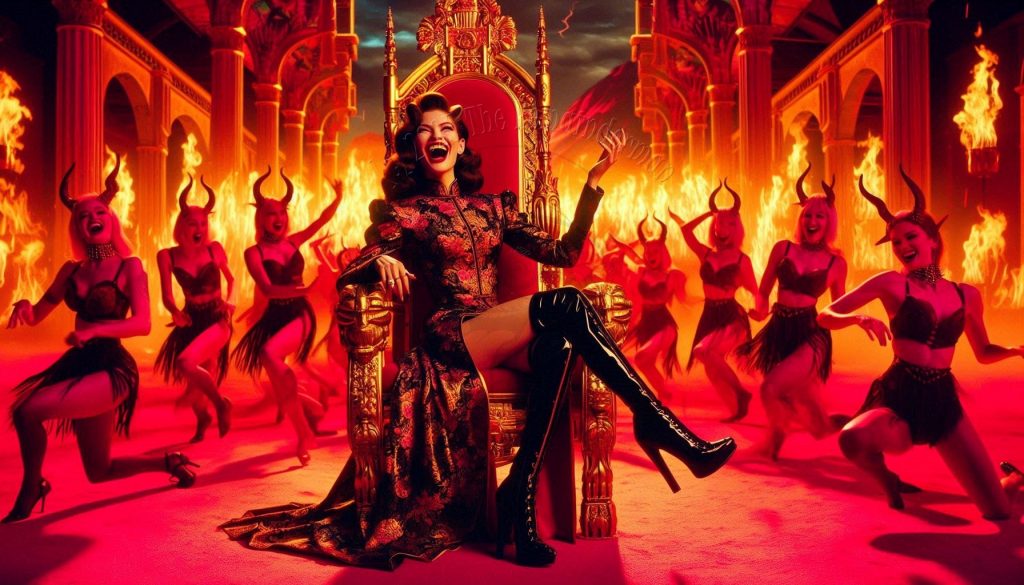
The Hell of Lust is home to the succubae, the incubi, and their slaves, the human damned (dead) and collaborators (still alive). The land is hot to the touch, a burning red desert with beds of bone-dry red sand interrupted by outcrops of black igneous rock. The air is humid, hot, and dark, with patches of steam fog floating listlessly through the still air. Being sunless, it is lit only by flames from burning naphtha seeps and tar pits, from pools of glowing magma, and to a minimal extent, the luxury of candles, lamps, and wood torches taken from the Earth.
Because it is sunless, rainless, and windless, its denizens live in the open air. The ruling, predatory demons enjoy walls for privacy, but rarely roofs; and comfortable matresses and pillows to insulate them from the heat and hardness of the ground. Human slaves rest and make do as best they can, tormented by perpetual hunger and–above all–thirst. Every slave of the succubae and incubi is permanently chastized, released if and only as long as it entertains their masters.
The damned cannot learn new languages, but are limited to the languages they spoke on Earth. There are no native demon languages.
TM, © 2025 by The Remainderman
A wanton demoness posing as an English aristocrat, rampages across Henry VIII’s Cambridge using her penchant for bringing out others’ wickedest urges, to debauch and defile everyone in her path. The envious are seduced to collaborate, the virtuous are persecuted to lose faith, and everyone over 18 gets their freak on. To endure, her survivors, including an earnest young tutor and his students, are forged into more passionate, tenuous versions of themselves.
This world begins with the actual historical record of natural events, people, and geographic locations in the early modern period when it is set, right down to what I was able to learn with the resources available to me of fires, improvements, and reconstructions of specific buildings such as the Doge’s Palace in Venice. It then adds supernatural dimensions, creatures, and plots *not* reported in any verifiable histories of the time. After much consideration of Jewish, Christian, Muslim, Hindu, Buddhist, and ancient pagan ideas about hell (most of them considered apocryphal or heretical within their respective religious traditions), I threw out most of the specific historical theories and proceeded to incorporate a physical realm from ideas about virtue and vice that would be widely recognized in at least most Western traditions. The result shares some terminology with Dante, but its relation to Dante’s inferno would be a challenge to many of his (and the Christian theologians’ who influenced him) ideas. I hope it will feel familiar while encouraging readers to seriously reconsider what concepts of hell tell us about how we live our lives.
In most respects, the natural human world in the story remains as true to known, actual historical events, people, and locations of the 16th Century as I could make it. Rather than altering known history, or making additions inconsistent with it, I tried to add details consistent with everything we do know. For an example of an event, the story includes an acqua alta in Venice on October 31, 1517. Historical records mention such an event in 1517, but I could not find a specific date for it. The date I picked is neither the most nor least likely, but possible. As an example of people, Earls of Warwick were created both before and after the date of the story; but the title was vacant during the time of the story. The location where Fensmere Manor is set did have buildings in the 16th century which were subsequently destroyed, and has been the site of a country home, but I did not find specific information about the buildings that existed at the time of the story. Some features of the manor are a bit early compared with when they became common in England, but they were possible and known at the time.
The liberties knowingly taken with the historical record of the natural world are narrow, idiosyncratic, egregious, and intentional; although they are not always what you might expect. For example, there were actually dildoes and other sex toys in the sixteenth century; and even predecessors of corsets and high heels. But not the actual corsets and stiletto heels as depicted in some of the AI generated images. In addition to being a matter of taste, there are practical problems with the actual dress of the time that would interfere with steamy scenes. Not hygiene–several historical sources insist people of the time were as clean as their technology and station allowed them to be, regardless of what things had been like 200 years before, or became again in the time of Versailles. Rather, as an example, the sources indicate extravagant women’s fashions, rather than consisting of complete garments, could have different sections that were laboriously pinned together and effectively assembled into what appeared to be complete garments. That sounds like quite an impediment to passion, and perhaps even an absolute bar to women cavorting away from their own chambers (imagine what she would look like in the morning, walking home with clothes pinned together by her paramour rather than her skilled lady’s maid…).
All that said, in taking certain liberties with history, I take comfort from the fact we are learning more about the renaissance and early reformation periods all the time, often upending assumptions about what was and was not possible. Some years ago, an entire book about medieval society was titled and marketed based on the fact that women didn’t wear underpants during the medieval and early modern periods. Then, a few years ago, excavations at an Italian castle unearthed a huge cache of underwear, including women’s underpants, from the period. I doubt a true stiletto would have been technologically achievable in the early 1500s, but blockier high heels would have been, even if we don’t see examples of them. Another respect in which I have altered history, but take comfort from the recent discoveries of social historians, is the age of consent. In Tudor England, as in parts of the United States until quite recently (and perhaps even today), people under the age of 18 could be legally married. In practice, however, there are indications underage marriages were rarely practiced; and when they were, it was typically for purposes of diplomacy, business, or estate-planning, not love or even friendship. Parents didn’t want their children being married before they were ready; and nobody thought it would be a good idea for children who couldn’t even support themselves yet, to be getting married or having children. Accordingly, in this world, the age of consent is 18 for all purposes.
Welcome to WordPress. This is your first post. Edit or delete it, then start writing!